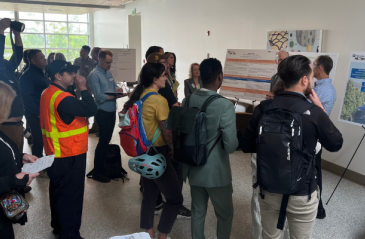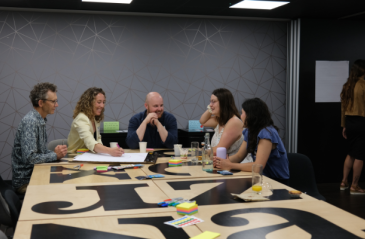
The information barriers holding back climate action and how to break them

"Transformation” can mean different things to different people and to different organisations
Share articleIn a transformation, not enough time is spent on the why or the how
Share articleThe most complex aspect of managing change is knowing when to go fast and when to go slow
Share articleWe put our vision for government into practice through learning partner projects that align with our values and help reimagine government so that it works for everyone.
Few things are as challenging as leading a transformation project.
The very word, “transformation” hints at the far-reaching change to come. With status quo and comfort zone cast aside, in their place comes something new and different, fresh and radical. Such a process is never straightforward. There are, however, some key route markers that can help leaders on their journey, guiding their way towards the end goal of achieving a real impact.
Let's start with a definition. What is a “successful transformation project”? It's an important question because “transformation” can mean different things to different people and to different organisations. For me, it starts with achieving the results and benefits that were originally aimed for - be they profit, efficiencies, collaboration or change. This benefit then needs to be sustained, surviving long after the completed change programme and nestling deep into the fabric of the organisation.
I have worked on about 60 public and private sector transformations across India, the Middle East and South East Asia. Although individual nuances and idiosyncrasies abound, through them all have emerged some recurring themes, starting with the critical importance of leadership alignment. Of course, this sounds basic and trite, but I have found it to be a surprisingly rare trait.
For example, I remember one public sector organisation that had been on a change journey for six months. They called me in to analyse their progress and so I asked the leadership team to write down what they were trying to change and why. Despite six months of working closely together on this project, the group had a very different perception and different descriptions of what they were aiming for. Leadership alignment, then, is crucial as without it a project is far less likely to succeed.
I have also observed that very quickly in the course of a change programme, teams can get focused on what needs to change - the jobs that need to change, the processes, the IT systems and so on. It is quite natural to fall into this trap but in my experience, not enough time is spent on the why or the how. For example, how do you get people to believe in the changes? And why we are making these changes? Very often in the pace and urgency of doing the project, these questions can get lost. But really, a leader should spend 80% of their time on the why and the how, and 20% on the what.
Similarly, leaders should consider who the changes are affecting. Much of the focus is on pushing ideas down onto a workforce but often people might not be ready for it. Leaders need to build capabilities by helping their teams prepare and adapt to change. Ideally, capability building, engagement and change must all go completely hand in hand so that they reinforce each other.
The most complicated aspect of how to manage change, however, is what I call “pacing” - knowing when to go fast and when to go slow. Leaders need to possess an instinct about what their organisation is ready for and when it is time to speed up or slow down. This base instinct is an art. No formula exists for it. Listening, though, is vital. If a leader spends as much time listening as they do telling then it gets easier but, even then, pacing remains a really complicated part of the journey.
And it should be remembered that it is a journey that actually starts before the change programme commences. Scoping new role definitions and job requirements inevitably occurs before the starting gun fires. However, change only really happens when people see that there is a consequence for changing what they do. Often, by the time we get to the consequences of a project we think the hard yards are done but this is where you need to pick up the pace.
Leadership alignment, capacity building, engagement, communication, persistence - the list of requirements a government leader needs in order to successfully oversee a transformation project can appear endless. And certainly, there is no doubt that leading a transformation is the severest test of someone's leadership skills, testing every aspect to the fullest.
But it can be done. Keep your eyes on the prize and your team as one and the impact you will be seeking will be delivered. It just takes time.












